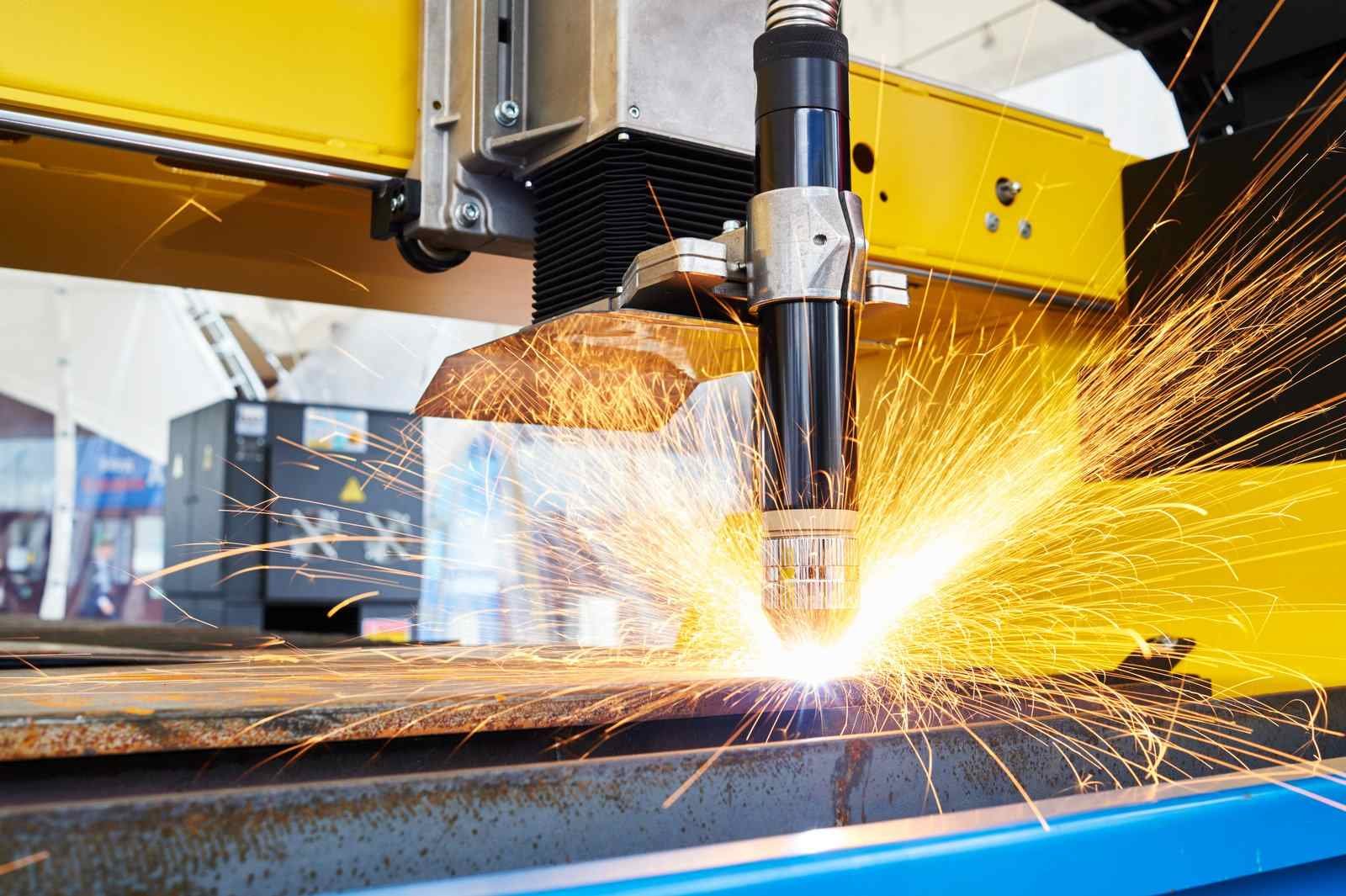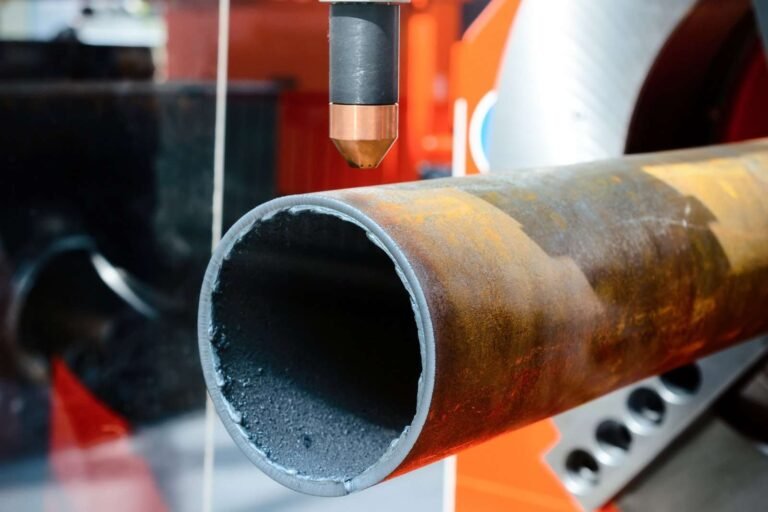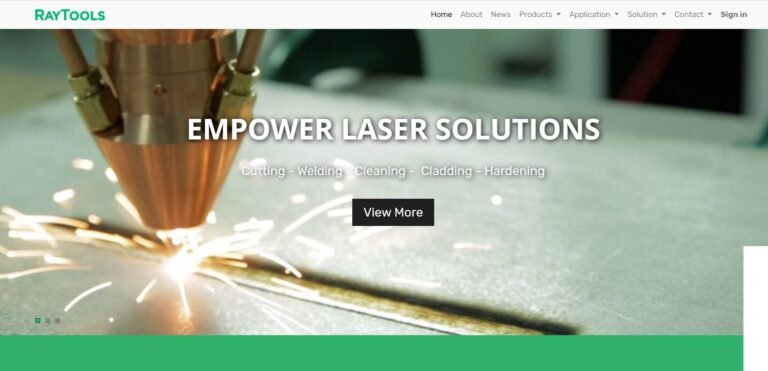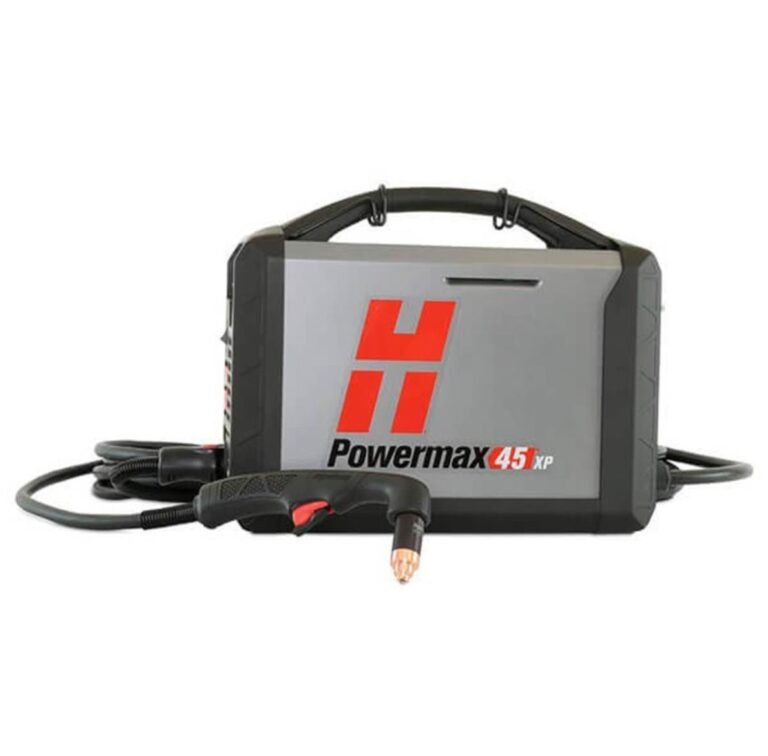Top 10 Plasma Cutting Machine Manufacturers In 2023
I. Introduction
Lasersourcing is a B2B trade company based in China that specializes in Fiber Laser Cutting Head Consumables and Alternative Parts for Plasma Cutters. Our company has a proven track record of providing fast delivery, high-quality products, a comprehensive product portfolio, and reasonable prices. Our aim is to help our clients save money while still obtaining top-quality products. Our primary target audience includes enterprise owners, buyers, dealers, wholesalers, and importers.
II. Plasma Cutting Machine Overview
Plasma cutting machines are used to cut through various materials, such as metal, wood, and plastic, using a high-velocity jet of ionized gas. The gas is usually compressed air, and the plasma cutter generates an electric arc that heats the gas to a high temperature, creating plasma. The plasma then melts the material being cut and blows away the molten metal, leaving a clean and precise cut.
The benefits of using plasma cutting machines include speed, accuracy, and versatility. Plasma cutters can cut through a wide range of materials and thicknesses, making them ideal for various industries, such as automotive, construction, and manufacturing.
There are two types of plasma cutters: conventional plasma cutters and precision plasma cutters. Conventional plasma cutters are designed for general-purpose cutting and are more affordable than precision plasma cutters. Precision plasma cutters, on the other hand, are designed for high-precision cutting and can cut through thicker materials with greater accuracy. They are typically more expensive than conventional plasma cutters.
III. Top 10 Plasma Cutting Machine Manufacturers in 2023
1.ESAB
ESAB is a global company with its headquarters located in Göteborg, Sweden. The company was founded in 1904 and has since become a leading manufacturer of welding and cutting equipment. ESAB’s primary products include plasma cutting machines, welding machines, and cutting consumables. ESAB’s plasma cutting machines are known for their precision, speed, and quality cuts. With over 100 years of experience in the industry, ESAB has developed a reputation for providing high-quality machines and excellent customer service. The company’s commitment to innovation and technology has made them a trusted partner for businesses worldwide.
2.Hypertherm
Hypertherm is a global company headquartered in Hanover, New Hampshire, USA. The company was founded in 1968 and has become a leading manufacturer of advanced cutting solutions. Hypertherm’s primary products include plasma cutting machines, waterjet cutting systems, and laser cutting systems. Hypertherm’s plasma cutting machines are known for their high-quality cuts, efficiency, and ease of use. With over 50 years of experience in the industry, Hypertherm has developed a reputation for providing innovative and reliable machines. The company’s commitment to sustainability and social responsibility has made them a trusted partner for businesses worldwide.
3.Messer Cutting Systems
Messer Cutting Systems is a global company with its headquarters located in Groß-Umstadt, Germany. The company was founded in 1898 and has since become a leading manufacturer of cutting machines and systems. Messer Cutting Systems’ primary products include plasma cutting machines, laser cutting machines, and oxyfuel cutting machines. Messer Cutting Systems’ plasma cutting machines are known for their precision, speed, and excellent quality cuts. With over 120 years of experience in the industry, Messer Cutting Systems has developed a reputation for providing high-quality machines and innovative solutions. The company’s commitment to sustainability and customer service has made them a trusted partner for businesses worldwide.
4.Panasonic
Panasonic is a global company with its headquarters located in Osaka, Japan. The company was founded in 1918 and has since become a leading manufacturer of a wide range of products, including plasma cutting machines. Panasonic’s plasma cutting machines are known for their precision, speed, and high-quality cuts. The company’s plasma cutting machines are suitable for various industries such as aerospace, automotive, and metalworking. With over 100 years of experience in the industry, Panasonic has developed a reputation for providing high-quality machines and innovative solutions. The company’s commitment to technology and sustainability has made them a trusted partner for businesses worldwide.
5.Cruxweld
Cruxweld is a company based in India that specializes in welding and cutting machines. The company was founded in 2001 and has since become a leading manufacturer of affordable welding and cutting solutions. Cruxweld’s primary products include plasma cutting machines, welding machines, and gas cutting machines. The company’s plasma cutting machines are known for their precision, speed, and affordability. With over 20 years of experience in the industry, Cruxweld has developed a reputation for providing high-quality machines at a reasonable price. The company’s commitment to customer satisfaction and innovation has made them a trusted partner for businesses in India and worldwide.
6.Huawei
Huawei is a global technology company with its headquarters located in Shenzhen, China. The company was founded in 1987 and has since become a leading manufacturer of various products, including CNC cutting machines. Huawei’s primary products include CNC plasma cutting machines, CNC flame cutting machines, and CNC pipe cutting machines. Huawei’s plasma cutting machines are known for their precision, speed, and quality cuts. With over 30 years of experience in the industry, Huawei has developed a reputation for providing high-quality machines and innovative solutions. The company’s commitment to technology and customer service has made them a trusted partner for businesses in China and worldwide.
7.Lincoln Electric
Lincoln Electric is a global company with its headquarters located in Cleveland, Ohio, USA. The company was founded in 1895 and has since become a leading manufacturer of welding and cutting equipment. Lincoln Electric’s primary products include plasma cutting machines, welding machines, and consumables. Lincoln Electric’s plasma cutting machines are known for their precision, speed, and high-quality cuts. With over 125 years of experience in the industry, Lincoln Electric has developed a reputation for providing innovative and reliable machines. The company’s commitment to sustainability and customer service has made them a trusted partner for businesses in the USA and worldwide.
8.Thermal Dynamics
Thermal Dynamics is a global company headquartered in Hanover, New Hampshire, USA. The company was founded in 1957 and has become a leading manufacturer of plasma cutting systems. Thermal Dynamics’ primary products include plasma cutting machines, welding machines, and consumables. Thermal Dynamics’ plasma cutting machines are known for their precision, speed, and quality cuts. With over 60 years of experience in the industry, Thermal Dynamics has developed a reputation for providing high-quality machines and innovative solutions. The company’s commitment to sustainability and customer service has made them a trusted partner for businesses in the USA and worldwide.
9.Miller Electric
Miller Electric is a global company headquartered in Appleton, Wisconsin, USA. The company was founded in 1929 and has since become a leading manufacturer of welding and cutting equipment. Miller Electric’s primary products include plasma cutting machines, welding machines, and consumables. Miller Electric’s plasma cutting machines are known for their precision, speed, and high-quality cuts. With over 90 years of experience in the industry, Miller Electric has developed a reputation for providing innovative and reliable machines. The company’s commitment to sustainability and customer service has made them a trusted partner for businesses in the USA and worldwide.
10.Torchmate
Torchmate is a company based in Reno, Nevada, USA, that specializes in manufacturing CNC plasma cutting machines. The company was founded in 1979 and has since become a leading manufacturer of affordable CNC cutting solutions. Torchmate’s primary products include CNC plasma cutting machines and software. Torchmate’s CNC plasma cutting machines are known for their precision, speed, and affordability. With over 40 years of experience in the industry, Torchmate has developed a reputation for providing high-quality machines at a reasonable price. The company’s commitment to innovation and customer service has made them a trusted partner for businesses in the USA and worldwide.
IV. Factors to Consider when Choosing a Plasma Cutting Machine
When selecting a plasma cutting machine, there are several factors to consider to ensure you choose the right machine for your specific needs. Here are some essential factors to keep in mind:
Cutting Thickness
One of the most crucial factors to consider is the cutting thickness required for your specific application. If you need to cut thicker materials, you’ll need a plasma cutter with higher amperage and wattage.
Accuracy
The accuracy of the plasma cutter is another critical factor to consider. If you require precise cuts, you should choose a plasma cutter with a high-quality cutting torch and advanced software to ensure accurate cuts.
Speed
The cutting speed of the plasma cutter is another critical factor to consider. If you need to cut a large volume of materials, you’ll want a plasma cutter that can handle the workload and cut at a fast speed.
Price
The price of the plasma cutter is also an important factor to consider. Plasma cutters can range in price from a few hundred to several thousand dollars, depending on the features and quality.
Customer Service
The customer service provided by the manufacturer is also an essential factor to consider. You want to choose a manufacturer that provides excellent customer service and technical support to ensure that any issues are resolved quickly and efficiently.
When choosing the right plasma cutting machine for your specific needs, it’s essential to consider all these factors carefully. You’ll want to choose a plasma cutter that meets your specific requirements in terms of cutting thickness, accuracy, speed, and price while also providing excellent customer service and technical support.
V. Common Questions about Plasma Cutting Machines
What is the best CNC plasma cutting machine?
Determining the best CNC plasma cutting machine depends on various factors such as cutting thickness, accuracy, speed, and price. However, there are several top-rated CNC plasma cutting machines on the market that are known for their precision, speed, and quality cuts. Some of the best CNC plasma cutting machines include the Hypertherm Powermax 65, ESAB Cutmaster 60i, Lincoln Electric Tomahawk 1000, and Miller Spectrum 875. Ultimately, the best CNC plasma cutting machine for your specific needs will depend on your business requirements and budget. It is recommended to consider these factors carefully when choosing a CNC plasma cutting machine to ensure that you get the best machine for your needs.
How much does a CNC plasma machine cost?
The cost of a CNC plasma cutting machine can vary depending on several factors such as cutting thickness, cutting size, power, and features. Typically, a basic CNC plasma cutting machine can range from $10,000 to $30,000, while a more advanced machine with additional features can cost between $30,000 to $100,000 or more. The cost of a CNC plasma cutting machine also depends on the manufacturer and the level of customization required. It is essential to carefully consider your business requirements and budget when selecting a CNC plasma cutting machine to ensure that you get the best value for your investment.
Is a plasma cutter a CNC machine?
A plasma cutter can be a CNC (computer numerical control) machine. CNC refers to the automation of machines using computer software to control various operations such as cutting, drilling, and shaping. In the case of a plasma cutter, a CNC system can be integrated to automate the cutting process using computer software. The CNC system allows for precise control of the plasma cutter’s movement, ensuring accurate and consistent cuts. However, not all plasma cutters are CNC machines. Some plasma cutters are manually operated and do not have a computerized control system. Ultimately, the decision to use a CNC plasma cutter or a manual plasma cutter will depend on the specific needs of the business and the type of cutting required.
What is the most powerful plasma cutter?
The most powerful plasma cutter on the market is the Hypertherm HPR400XD. This plasma cutter is designed for heavy-duty industrial applications and can cut through materials up to 3 inches thick. The Hypertherm HPR400XD is known for its fast cutting speeds, precision, and reliability. It utilizes Hypertherm’s patented True Hole technology, which provides superior hole quality and reduced taper, making it ideal for high-precision cutting. The Hypertherm HPR400XD also features automatic gas control and consumable management, which helps to improve productivity and reduce operating costs. While the Hypertherm HPR400XD is the most powerful plasma cutter available, it may not be necessary for all applications. It is essential to consider the cutting requirements carefully when selecting a plasma cutter to ensure that it is the right fit for your business needs.
What is better than a plasma cutter?
When it comes to cutting metal, there are several methods available, each with its own advantages and disadvantages. While plasma cutting is an efficient and versatile cutting method, there are some instances where other cutting methods may be more appropriate. For example, laser cutting is known for its precision and accuracy, making it ideal for intricate cuts and detailed designs. Waterjet cutting is also an excellent option for cutting materials that cannot withstand the heat generated by plasma or laser cutting, such as stone, glass, and some metals. Additionally, oxy-fuel cutting is an effective method for cutting thick materials. Ultimately, the best cutting method will depend on the specific needs of the business, the type of material being cut, and the desired results. It is recommended to consider all available cutting methods carefully before making a decision.
What cuts better than a plasma cutter?
When it comes to cutting metal, there are several methods available, each with its own advantages and disadvantages. While plasma cutting is an efficient and versatile cutting method, there are some instances where other cutting methods may be more appropriate. For example, laser cutting is known for its precision and accuracy, making it ideal for intricate cuts and detailed designs. Waterjet cutting is also an excellent option for cutting materials that cannot withstand the heat generated by plasma or laser cutting, such as stone, glass, and some metals. Additionally, oxy-fuel cutting is an effective method for cutting thick materials. Ultimately, the best cutting method will depend on the specific needs of the business, the type of material being cut, and the desired results. It is recommended to consider all available cutting methods carefully before making a decision.
What are the two types of plasma cutters?
A pilot arc plasma cutter uses a high-frequency circuit to create a small, low-amperage spark between the electrode and the nozzle. This spark ionizes the gas and creates a pilot arc, which then cuts through the metal. Pilot arc plasma cutters are typically used for cutting thicker materials or metals that are painted or rusty.
A contact start plasma cutter, on the other hand, uses a high-frequency circuit to generate a spark between the electrode and the workpiece, creating a small pocket of plasma. This pocket of plasma is then used to cut through the metal. Contact start plasma cutters are typically used for thinner materials or metals that are not painted or rusty.
Do plasma cutters use AC or DC?
Most plasma cutters use DC (direct current) to generate the plasma arc. The DC current is delivered to the electrode, creating a negative charge that ionizes the gas and creates the plasma arc. The plasma arc then cuts through the metal. Some plasma cutters can also use AC (alternating current) to generate the plasma arc, but these are less common. In general, DC plasma cutters are preferred for their ability to produce a stable and consistent plasma arc, which results in cleaner cuts and smoother edges. However, there are certain applications where an AC plasma cutter may be more appropriate. It is essential to carefully consider the requirements of your cutting applications when selecting a plasma cutter to ensure that you choose the right machine for your needs.
What is a disadvantage of CNC plasma cutting machines?
One disadvantage of CNC plasma cutting machines is that they can be expensive to purchase and maintain. These machines require specialized software and equipment, as well as regular maintenance to keep them operating at peak efficiency. Additionally, CNC plasma cutting machines may require a skilled operator to ensure that they are used correctly and safely. This can increase labor costs and training expenses for businesses that are considering purchasing a CNC plasma cutting machine. Another potential disadvantage of CNC plasma cutting machines is that they may not be suitable for all cutting applications. While they are efficient and effective for many types of metal cutting, they may not be the best choice for cutting certain materials or for very intricate cutting applications. It is essential to carefully evaluate the specific needs of your business before investing in a CNC plasma cutting machine to ensure that it is the right choice for your operations.
What software do plasma cutters use?
Plasma cutters use specialized software to control the cutting process and ensure that it is accurate and efficient. The most common software used with plasma cutters is CAD/CAM software, which allows users to create and manipulate 2D and 3D designs on a computer. The CAD/CAM software can then convert the design into machine code that the plasma cutter can understand and execute. Some plasma cutting machines also use proprietary software that is specific to the manufacturer or model. This software may include additional features and functionality that are designed to optimize the performance of the machine. It is important to select a plasma cutting machine that is compatible with the software that you plan to use, or that comes with the necessary software included.
Is plasma cutting cheaper than laser cutting?
Plasma cutting is generally considered to be a more affordable cutting method than laser cutting. Plasma cutting machines are typically less expensive to purchase and maintain than laser cutting machines, and they require fewer consumable parts. Additionally, plasma cutting machines can cut through thicker materials than laser cutting machines, making them more versatile for certain applications. However, it is important to note that the cost of plasma cutting versus laser cutting can vary depending on the specific needs of the business and the materials being cut. Laser cutting may be a more cost-effective option for businesses that require extremely precise cuts or that need to cut a wide range of materials. It is essential to carefully evaluate the costs and benefits of both cutting methods before making a decision to ensure that you choose the right cutting method for your business needs and budget.
How many types of plasma cutters are there?
There are two main types of plasma cutters: handheld and mechanized.
Handheld plasma cutters are designed for manual cutting applications and are often used in small-scale operations or for on-site cutting tasks. These machines are portable and lightweight, making them easy to transport and maneuver. Handheld plasma cutters typically have lower amperage ranges and can cut through thinner materials than mechanized plasma cutters. They are generally less expensive than mechanized plasma cutters and require less maintenance.
Mechanized plasma cutters, on the other hand, are designed for automated cutting applications and are typically used in larger-scale operations or for industrial cutting tasks. These machines are larger and more powerful than handheld plasma cutters and are designed to cut through thicker materials. Mechanized plasma cutters are often integrated with CNC (computer numerical control) systems, which allow for precise and automated cutting of complex shapes and patterns. They require more specialized knowledge and training to operate and maintain than handheld plasma cutters and are typically more expensive to purchase and maintain.
What are three dangers of plasma cutting?
Plasma cutting can be a hazardous process, and it is important to take proper safety precautions to avoid injury or damage. Three common dangers of plasma cutting include:
Electrical shock: Plasma cutters use high-voltage electricity to ionize the gas and create the plasma arc. This can create a risk of electrical shock if the machine is not properly grounded or if the operator comes into contact with the metal being cut.
Arc flash: Plasma cutting generates intense heat and light, which can cause an arc flash. This can lead to burns or eye damage if the operator is not wearing appropriate personal protective equipment (PPE), such as welding goggles or a welding helmet with a shade 10 or higher lens.
Toxic fumes: Plasma cutting can produce toxic fumes and gases, such as nitrogen oxide, which can be harmful if inhaled. Proper ventilation and respiratory protection are necessary to prevent exposure to these fumes.
To minimize these dangers, it is essential to follow all recommended safety procedures and use appropriate PPE, such as gloves, goggles, and respirators. It is also important to ensure that the plasma cutter is properly maintained and used by trained operators.
What are the disadvantages of plasma cutting?
While plasma cutting offers many advantages for cutting through various materials, it also has some disadvantages to consider. Some of the disadvantages of plasma cutting include:
Limited cutting thickness
Plasma cutters can cut through a wide range of materials, but they are typically only capable of cutting through materials up to a certain thickness. If you need to cut through thicker materials, you may need to use a different cutting method.
Rough edges
Plasma cutting can produce rough edges, particularly when cutting through thicker materials. This may require additional finishing work to achieve the desired level of smoothness.
Noise and sparks
Plasma cutting can be loud and produce bright sparks, which can be a hazard in certain environments. Adequate ventilation and PPE are necessary to protect against sparks and fumes.
Consumables
Plasma cutters require regular replacement of consumable parts, such as electrodes, nozzles, and shields. These consumables can add to the overall cost of operating a plasma cutting machine.
Initial cost
While plasma cutting is generally considered more affordable than laser cutting, the initial cost of purchasing a plasma cutting machine can still be significant, particularly for mechanized plasma cutters or for those that require additional components such as CNC systems.
It is important to weigh the advantages and disadvantages of plasma cutting against your specific cutting needs to determine if it is the right cutting method for your business.
What can a plasma cutter not cut?
While plasma cutters can cut through many different types of materials, there are some materials that a plasma cutter may not be able to cut effectively. These materials include:
Highly reflective materials
Plasma cutters may struggle to cut through materials that reflect the plasma arc, such as aluminum and copper. These materials may require a different cutting method, such as waterjet cutting or laser cutting.
Materials with low melting points
Materials with low melting points, such as plastics or rubber, may not be suitable for plasma cutting. These materials may melt or warp under the high temperatures of the plasma arc.
Thick materials
While plasma cutters are capable of cutting through a range of materials, they may not be able to cut through materials that are too thick. If you need to cut through thick materials, you may need to consider other cutting methods, such as oxy-fuel cutting or waterjet cutting.
Materials with intricate designs
While plasma cutters are capable of cutting complex shapes and designs, they may struggle with very intricate or detailed designs. In these cases, laser cutting or waterjet cutting may be a better option.
It is important to consult with a professional to determine the best cutting method for your specific material and design requirements.
How long does a plasma cutter last?
The lifespan of a plasma cutter can vary depending on several factors, including the quality of the machine, how frequently it is used, and the type of materials being cut. However, with proper maintenance and care, a plasma cutter can typically last for several years.
The consumable parts of a plasma cutter, such as the electrode, nozzle, and shield, will need to be replaced periodically as they wear out. The frequency of these replacements will depend on the usage of the machine and the materials being cut. For example, if a plasma cutter is used frequently to cut through thick or hard materials, the consumable parts may need to be replaced more frequently.
Regular maintenance, such as cleaning the machine and replacing consumable parts as needed, can help extend the lifespan of a plasma cutter. It is also important to use the machine within its recommended specifications and to avoid overuse or misuse.
Some manufacturers may offer warranties or guarantees for their plasma cutters, which can provide additional peace of mind and protection for your investment. It is important to follow the manufacturer’s recommended maintenance and care instructions to ensure the longevity of your plasma cutter.
Does a plasma cutter use a lot of electricity?
Plasma cutters can use a significant amount of electricity, especially when cutting through thicker materials. The power consumption of a plasma cutter will depend on several factors, including the power rating of the machine, the thickness and type of material being cut, and the cutting speed.
In general, higher-powered plasma cutters will consume more electricity than lower-powered models. For example, a 100-amp plasma cutter will use more electricity than a 40-amp plasma cutter. Additionally, cutting through thicker materials will require more power and therefore more electricity.
It is important to consider the electricity consumption of a plasma cutter when selecting a machine and planning for its use. To reduce energy consumption, it is recommended to use the machine within its recommended specifications, avoid overuse or misuse, and use efficient cutting techniques.
Many modern plasma cutters are designed with energy-efficient features, such as power-saving modes and automatic shut-off, to help reduce electricity consumption. Additionally, using a high-quality power source with stable voltage and current can help improve the efficiency and performance of a plasma cutter.
Can a plasma cutter cut leather?
Plasma cutters are not typically used for cutting leather. While a plasma cutter can cut through a variety of materials, such as metal, plastic, and wood, leather is not one of the materials commonly cut with a plasma cutter.
Leather is a soft, flexible material that can be easily cut with scissors or a knife. While a plasma cutter could technically cut through leather, it would likely result in a rough, jagged edge that would not be suitable for many leatherworking applications.
There are other tools that are better suited for cutting leather, such as a rotary cutter or a leather knife. These tools are designed specifically for cutting leather and can produce clean, precise cuts without damaging the material.
If you need to cut leather for a specific project, it is recommended to use the appropriate tool for the job. While a plasma cutter may be able to cut through leather, it is not the best or most practical option for this type of material.
VI. Conclusion
In conclusion, choosing the right plasma cutting machine is crucial for your business needs and budget. The top 10 plasma cutting machine manufacturers, including ESAB, Hypertherm, Messer Cutting Systems, Panasonic, Cruxweld, Huawei, Lincoln Electric, Thermal Dynamics, Miller Electric, and Torchmate, offer various options with unique selling points, products, and prices. When selecting a plasma cutting machine, consider factors such as cutting thickness, accuracy, speed, price, and customer service. Additionally, the continuous pilot arc, plasma cutting torch, portable plasma cutter, plasma torch, air pressure, mild steel, cheap plasma cutter, plasma cutter reviews, power supply, expanded metal, and high quality plasma cutters are all important factors to consider. At Lasersourcing, we offer a comprehensive range of high-quality plasma cutting machines to meet your specific needs. Contact us today to find the best plasma cutting machine for your business.
